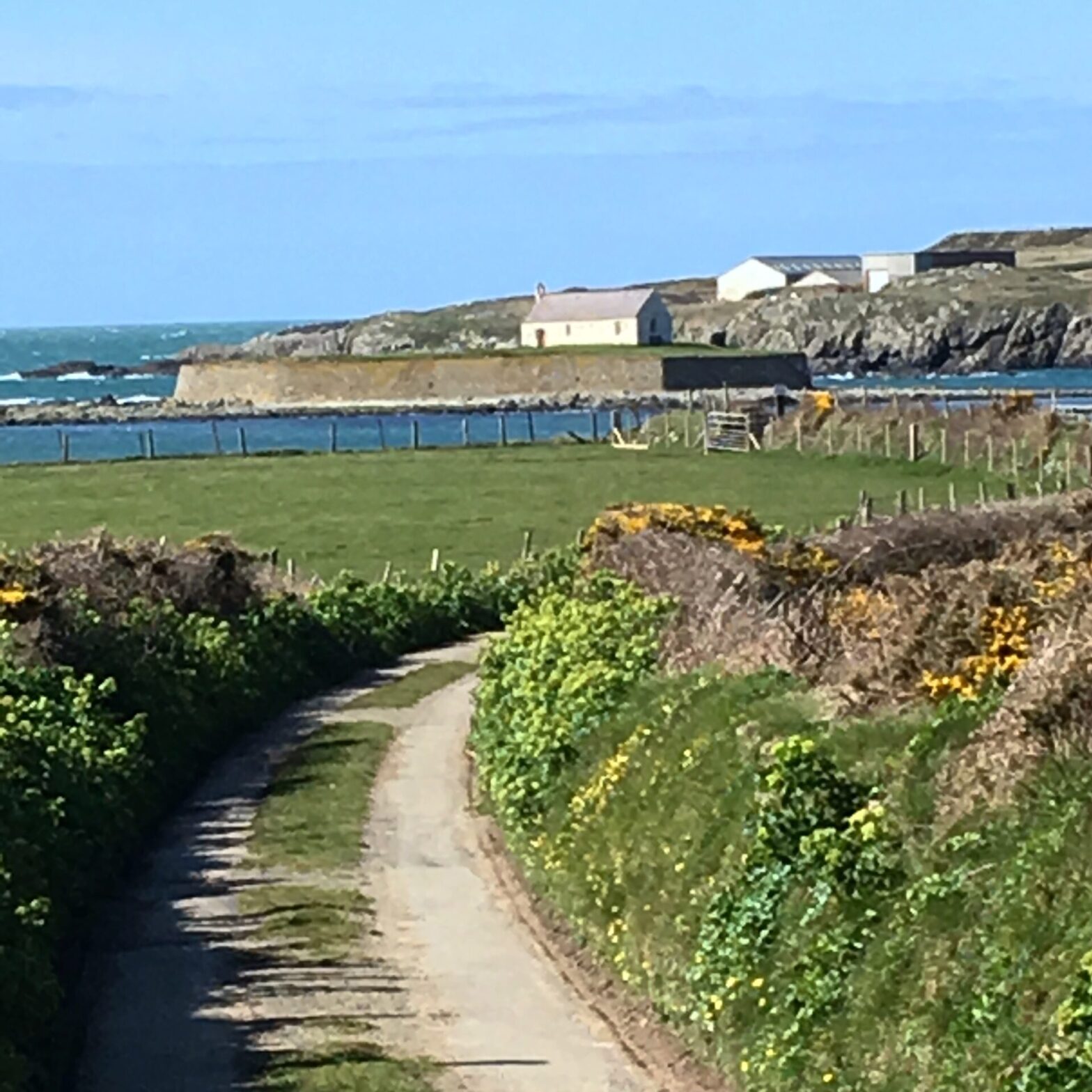The charming church with a chequered past
The ‘Church in the Sea’, ‘Eglwys Fach y Môr’ or to give it its proper name, St Cwyfan, provides a great focus for an interesting and varied cycle on Anglesey.
The Church sits off Anglesey’s coast and is marooned at high tide. Its such a beguiling sight that you can see why it’s so popular with ‘Instagrammers’. There are some amazing images of the tiny church, sitting in the sea, sometimes under a moody sky, with the Milky Way suspended above, or surrounded by a foaming sea.
But what is the story of this Church?
Nestled between Port Cwyfan and Porth China, just beyond the pretty village of Aberffraw, St Cwyfan’s Church has not always stood alone in the sea. In fact, John Speed’s map of Anglesey, dating from 1636 shows the church firmly on a headland.

But that headland was made of boulder clay, and erosion by winter storms left the church marooned on the ever-decreasing promontory.
Visited by walkers on the Anglesey Coastal Path, the Church is also the focus for two Guided Bike Tours on Anglesey provided by Green Lane Bike Tours.
At first sight, this appears similar to many tiny churches on Anglesey, but it was once twice its present size, with an additional aisle added in the early 1500s. The remains of these can be seen as three arches can be seen in the north wall. Although it is among Anglesey’s earliest churches and records show that it existed in 1254, only a small part of the church dates from that period. The Church was largely rebuilt in the 1300s.
One feature which may date from this or an earlier period, is a very worn stone, by the front door, which some have interpreted as a weather-worn Green Man; one of those carvings showing the face of a bearded man surrounded by leaves and with leaves coming from his mouth.
The controversy which shook an island
The church has not escaped controversy. In 1766, a Reverend Thomas Bowles was appointed the vicar of Trefdraeth, Llangwyfri and the chapelry of St Cwyfan (our church). He spoke no Welsh, and only five of his 500 parishioners spoke English.
The Rev Bowles struggled to deliver some services in Welsh, but these were met with a mixture of mirth and alarm by his parishioners. Relations deteriorated between Rev Bowles and his parishioners, and matters came to a head when it came to light that he’d tricked his two Churchwardens into signing a document stating that: ‘on Sunday 30 day of Oct 1768 Thomas Bowles DD rector of this Parish church of Trefdraeth within the diocese of Bangor and County of Anglesey, officiated and performed divine service in the vernacular with fluent and easy delivery and a graceful propriety of accent and pronunciation and this we attest, by setting our hand hereto, and personally knowing the truth.’
Supported by leading Anglesey families and the leading Welshmen of the day, the case was taken to the highest Church court. The court adjourned for two years before providing a decision that the Reverend Bowles could not lose his position. But the court reiterated earlier Acts of 1563 and 1662 confirming that clergy should be able to officiate in the language of their parishioners. Within the year, in August 1773, the Reverend Bowles died aged 77.
Troubles not over

Travails for Cwyfan’s parishioners had not come to an end as the sea continued to erode the church though this period. Around 200 graves were lost to the sea in the 1800s.
In 1870 a new church was built for the parishioners in more convenient location, and the church continued to disintegrate, losing its roof in one particularly bad storm. That’s when local architect Harold Hughes stepped up in 1893 to save St Cwyfan. He raised money, and was responsible for the seawall which still protects the small island of Cribinau, and restored the building which we see today.
Join us for a Guided Bike Tour to St Cwyfan
Cwyfan Church in the Sea, is a 22 mile Guided Bike Tour which visits the island church.
Ride out to sea with a tidal church and a proper Welsh Tea is a Tour by Green Lane Bike Tours commissioned by Explore Churches which includes a visit inside St Cwyfan, St Beuno, Aberffraw and St Cadwaladr, Llangadwaladr, tea and cake and a donation to support the churches visited.
If you want to cycle on Anglesey, you can also contact us to purchase this or any of our other Self-Guided Tours. (These sales are not automated).
Church services at St Cwyfan can be found at https://www.brocwyfan.cymru/

